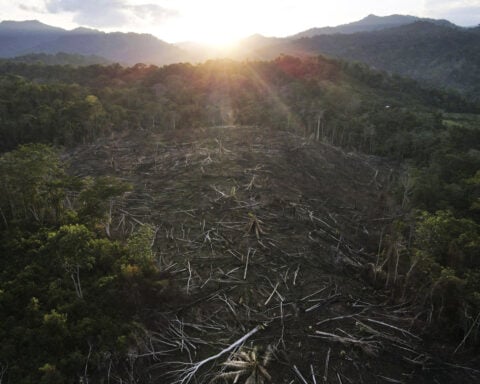Scientists sounded the alarm on microplastic pollution 20 years ago. Now, new research shows these tiny bits of plastic have invaded every corner of our world and our bodies.
A fresh look at microplastics research since 2004, published in Science, boils down the key takeaways from thousands of studies. The paper examines sources, environmental impacts and potential health effects of plastic fragments less than 5 micrometers in diameter.
"It’s now pretty clear that this stuff is everywhere," said Richard Thompson, who studies marine biology at Plymouth University. Thompson first coined the term "microplastics" back in 2004 and led this latest review.
From the deepest ocean trenches to the peak of Mount Everest, scientists have found microplastics in pretty much every environment they've looked at. These pesky plastic bits aren't just in nature - they're inside us too. Researchers have spotted them in human blood, breast milk, and even in our organs and placentas.
Thompson warned, "To get something to work, it’s not just about a chemistry experiment in a lab."
Major sources of microplastic pollution include:
- Breakdown of larger plastic debris
- Paint containing plastic polymers
- Rubber tire particles shed on roads
- Synthetic textile fibers released during wear and washing
- Fishing nets and gear
Improved detection technologies have enabled scientists to identify smaller particles and more precisely analyze their composition. This has revealed the vast extent of contamination.
Even the rain isn't safe anymore - a 2020 study found that microplastics are falling from the sky in raindrops. Another estimated nearly 13 million metric tons enter oceans and land annually.
Over 1,300 aquatic and terrestrial species have been documented to contain microplastics. While health impacts on humans remain unclear, lab studies have linked the particles to cell inflammation and cancer spread.
Public concern is growing. Recent surveys show over 90 percent of US voters are somewhat or very concerned about microplastics in the human body.
Industry groups acknowledge human exposure but deny evidence of harm. The Plastics Industry Association says it supports more research and investments in pollution prevention.
Some interventions have begun, like requiring microfiber filters on new washing machines in France. The European Union is phasing out microplastics in products like shampoo.
Thompson said multidisciplinary approaches considering economics and behavioral science are needed to address the issue. He supports limiting overall plastic production.
Environmental advocates view an upcoming UN treaty on plastic pollution as the best opportunity to enact meaningful solutions.
"The only way to stop plastic pollution is to significantly reduce plastic production," said Jen Fela of the Plastic Pollution Coalition.
Final treaty negotiations are scheduled for November in Busan, South Korea.

 German Christmas market ramming is the latest attack to use vehicles as deadly weapons
German Christmas market ramming is the latest attack to use vehicles as deadly weapons
 How to save a fentanyl victim: Key facts about naloxone
How to save a fentanyl victim: Key facts about naloxone
 Eight convicted in France over murder of teacher who showed Prophet caricature
Eight convicted in France over murder of teacher who showed Prophet caricature
 In a calendar rarity, Hanukkah starts this year on Christmas Day
In a calendar rarity, Hanukkah starts this year on Christmas Day
 What to know about Hanukkah and how it's celebrated around the world
What to know about Hanukkah and how it's celebrated around the world
 Russia's UK embassy denounces G7 loans to Ukraine as 'fraudulent scheme'
Russia's UK embassy denounces G7 loans to Ukraine as 'fraudulent scheme'
 Retailer Party City files for bankruptcy, will wind down 700 stores
Retailer Party City files for bankruptcy, will wind down 700 stores
 Philadelphia 76ers star Joel Embiid working through injuries and mental health struggles
Philadelphia 76ers star Joel Embiid working through injuries and mental health struggles
 Weightlifting Taiwan granny, 90, garners cheers, health benefits at gym
Weightlifting Taiwan granny, 90, garners cheers, health benefits at gym
 Soccer's top players have had enough, as FIFA's new super-sized tournament sparks a revolt
Soccer's top players have had enough, as FIFA's new super-sized tournament sparks a revolt
 New research reveals the alarming spread of microplastics worldwide, from mountaintops to human bodies.
New research reveals the alarming spread of microplastics worldwide, from mountaintops to human bodies.







